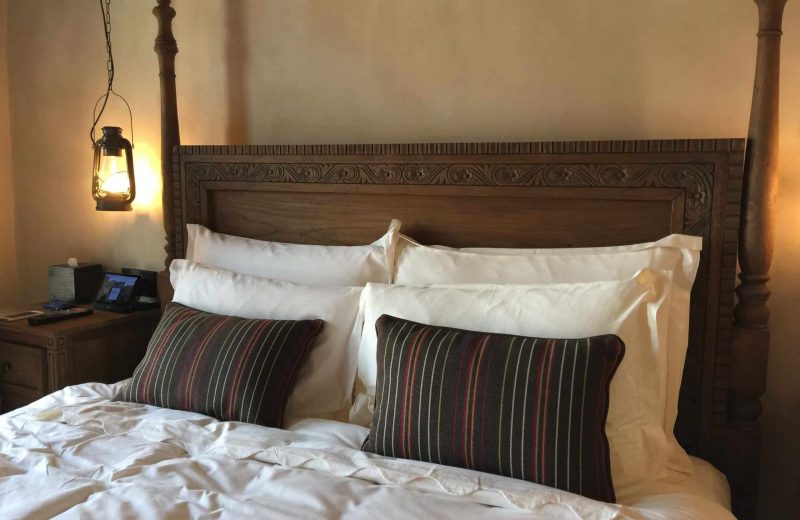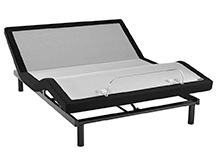
Sleeping is among the body’s most natural functions and is critical for a healthy and happy life. Quality sleep isn’t always attainable, though, as millions of people struggle to get enough sleep each night. See how creating the right bedroom environment can make all the difference.
Sleep hygiene, the habits, and tools that promote deep and restorative sleep will ease this struggle. Creating a bedroom environment that facilitates rest and relaxation will also improve your sleep and overall quality of life. To begin, invest in a high-quality mattress specifically designed to suit your unique needs.

The majority of people use a bedroom to sleep in but don’t use their bedroom just to sleep. The bedroom is a multi-functional space that appeals to both the waking and sleeping senses. We often do things like work, watch TV, complete chores, and read in the bedroom. While this does help our lifestyle during the day, it can negatively affect our sleep at night.
A bedroom designed for daytime activity stimulates the brain and keeps us from falling asleep. The majority of our time in the bedroom is actually spent sleeping, so our sleeping senses should be the top priority when designing our rooms.
The mattress is the bedroom’s anchor and should be the top priority when shopping for, designing, and utilizing the space.
Your weight, age, body shape, sleeping positions, and environmental preferences are just a few factors that influence your ideal mattress. Experts at Mattress World Northwest will work with you to understand your unique characteristics and match them to the right bed.
Creating a bedroom environment that compliments your perfect mattress only requires a few steps and likely won’t change how functional the room is in the daytime. Start by evaluating how your bedroom appeals to the senses that influence your sleep.
Color and light are two of the biggest triggers telling your brain to stimulate the body. A bedroom environment filled with bright colors can keep you awake so try a muted and warm color scheme instead. When choosing colorful items for your room, pay attention to the colors of the walls, the bedding, and decorations like artwork or rugs.

The layout of the bedroom can disrupt your sleep as well. A cramped space filled with clutter can spark anxiousness and stress, keeping the brain from drifting to sleep. Create a comforting bedroom space by using simple, symmetrical, and tidy furniture and decorations. The rules of Fung Shui offer more ideas on developing a pleasant sleep environment, like how the type of furniture and furniture location can help the brain and body relax before bed.
Scents and odor play a role in sleep quality. Smells can direct the circadian rhythm and other body processes like hunger, anxiety, or relaxation. The exact impact smells have on sleeping isn’t fully clear, but some studies suggest that smells can even affect dreams and memory. The impact of smell on sleeping can differ from person to person, though.
There are common scents that are known to encourage sleep, including lavender, rose, jasmine, and chamomile. Spreading these scents through candles, essential oils, or even plants can help you fall asleep faster and stay asleep longer.
Other scents tend to make the brain alert. Coffee, rosemary, peppermint, and sage, for example, are all considered stimulants that activate the brain and improve cognition. These smells may be helpful during the day, but try avoiding them before or during bed.
Unpleasant smells can also distract the brain from sleep. Rooms with bad odors, or even just stuffiness, can spark stress or anxiety. Keeping your bedroom clean and fresh can be a beneficial sleep aid.
Noise, or the lack thereof, is a big part of whether your body and brain can fall and stay asleep. Many people like complete silence at night. Others use various types of background sounds to focus on sleep. These noises drown out distractions from nearby neighbors or streets, their sleeping partner’s movement or snoring, or even house noises like the HVAC system. Since people respond to noise differently while they sleep, it is good to test different strategies. Those who sleep in silence but are struggling to get quality rest should try new sleep sounds.
Color noises are great tools to promote a night of rest. Color noises use different frequencies to put off sounds and include white, pink, brown, blue, gray, and black noise. Each color sounds different, so the brain reacts to eachdifferently. Most people sleep with white, pink, brown, or blue noise.

Slow and soothing music also encourages peaceful rest. Winding down to slow rhythms, ideally from 60 to 80 beats per minute, can help soothe the mind and body as it drifts to sleep.
Use phone apps or noise machines to find artificial color noises, sounds of nature, and music.
The things we touch and feel will also influence how we sleep at night. Consider the things you feel when you go to bed. The mattress, sheets, pillows, pajamas, and even the air, are all important factors.
The ideal sleeping temperature is roughly 65 degrees Fahrenheit. This is because our core body temperature of 98.6 degrees drops as the brain releases sleep hormones. Body temperature continues to fall as we drift deeper into sleep, then warms up as the sleep cycle ends.
Because warmer temperatures trigger alertness in the brain, it is best to sleep in cooler climates.
Choose lightweight and breathable clothing to sleep in, which will help your body stay cool. Breathable mattresses and sheets are also beneficial.

The team at Mattress World Northwest comprises experts in high-quality sleep and equipment that supports the ideal sleep environment. Mattress World Northwest carries dozens of luxury mattress options and offers unique benefits to each of our clients. Visit us, and we will help you find the best bed for your needs!
« Best Mattress for Insomnia | Best Time to Buy a New Mattress »
While you can't go wrong with any of our mattresses, here are a few factors you'll want to consider before making a purchase: your sleep position (and if you have a partner, theirs as well), the size of the space, and a price point. If you have any questions, rest easy knowing that our team is happy to help you find that perfect fit.
| Size | Dimensions |
|---|---|
| Twin | 38″ wide x 75″ long x 9.25″ tall |
| Twin XL | 38″ wide x 80″ long x 9.25″ tall |
| Full | 54″ wide x 75″ long x 9.25″ tall |
| Queen | 60″ wide x 80″ long x 9.25″ tall |
| King | 76″ wide x 80″ long x 9.25″ tall |
| Cal King | 72″ wide x 84″ long x 9.25″ tall |
| Split King (2pk) | 38″ wide x 80″ long x 9.25″ tall |
Mattress World Northwest makes it easy to choose the right foundation for your space and lifestyle.



Reliable support for your boxspring and mattress.
